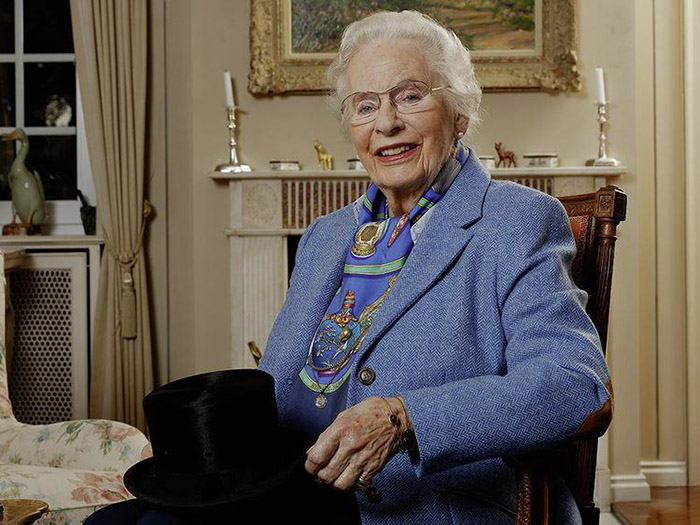
Frau Springer
Rosemarie Springer is no longer with is. but her wisdom lives on…
Back in 1987, Roslyn Neave recorded this brilliant clinic with the grand dame of dressage, Rosemarie Springer. Frau Springer was born in 1920. She first rode a horse sitting on her father’s lap at the age of two. Her riding career was interrupted by WW2, but she took up dressage again in 1950, and became one of the star pupils of master trainer, Willi Schultheis, and went on to place 7th individually at the Rome Olympics of 1960. She retired from competition in the late 70’s after winning the German national championship seven times. Rosemarie remained active in the sport as a judge and a trainer… which is how she came to be at the Dierks’ Training Centre for this historic clinic.
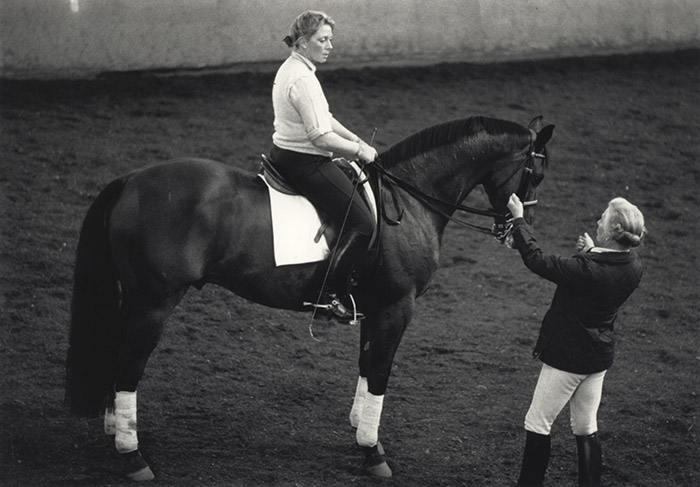
Rosemarie Springer, Judy Dierks and Galoubet
There was much to enjoy and appreciate the Rosemarie Springer school at Clemens and Judy Dierk’s establishment at Dural. Frau Springer shone like the sun overhead, and radiated professionalism and charm. And although working sessions were high powered, Frau Springer’s sympathetic manner prevailed. Riders were quick to offer each other assistance with gear, advice and discussion after the training sessions.
Libby Anderson, who was riding her stock horse bred gelding, Rivoli Majestic, at the school, reflected the riders’ feelings: “I was very much looking forward to this school with Frau Springer, because of her tremendous reputation, and her skill as a rider. Frau Springer has certainly exceeded my expectations, I didn’t expect the progress – it’s probably working through me because Frau Springer gets to the rider’s mind very very quickly, and gives you the confidence to let the horse carry himself. It’s a softness and happy submissiveness that she’s after. It really has been a terrific experience.”
Frau Springer’s ability to get into the rider’s mind was certainly evident from the spectators point of view – but although she was quick to correct, she was just as quick to praise improvement. Working sessions were demanding for both horse and rider, with the dynamic Frau Springer pushing each combination – ” Canter, small circle, half pass left, half pass right, medium canter… ”
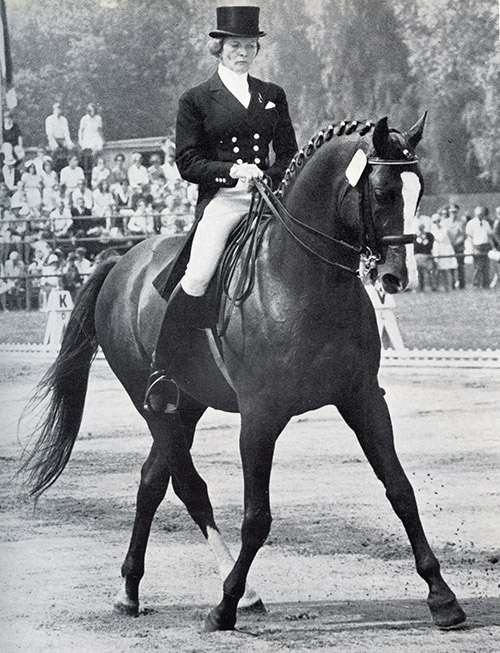
“Half Pass – Give the horse a chance with your hand to develop the movement. Take and give and push the horse together. You must bend and send the horse. Be full of energy and strength.”
The rider, Rosemarie’s fellow team member, Liselot Linsenhoff and her 1972 Olympic gold medalist, Piaffe
And so it went on, with the elegant but petite Frau Springer demonstrating on the rider’s horse where necessary. Frau Springer rode every horse at the school at least once! I caught her at her lunch break to record this exclusive interview, and even after a heavy morning, Frau Springer was still bubbling with enthusiasm and charm.
more follows
Be sure to purchase your Bates Saddle Pad between 1 November and 24 December 2022 to make the most of this opportunity.
Visit www.batessaddles.com to find your nearest stockist or to purchase your Bates Saddle Pad.
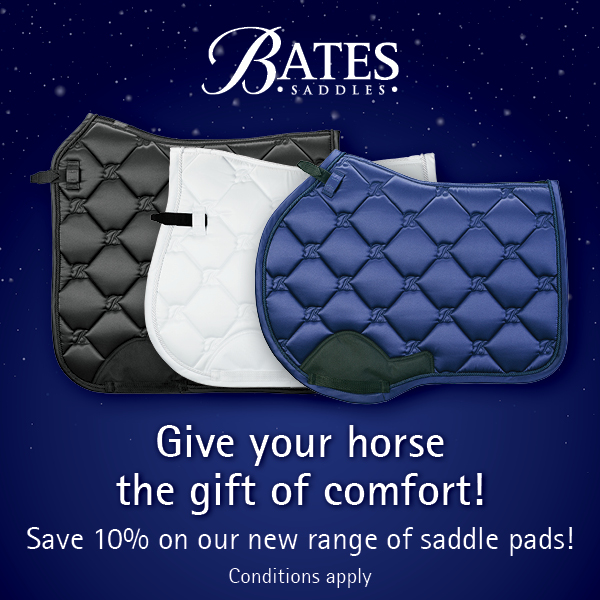
“I think the best philosophy of the whole teaching of riding comes from Schultheis and before this it came from Lörke, he was our oldest Master. Schultheis was his pupil, and I was Schultheis’s pupil. He was with us for twenty years, and I really learned quite a lot. He had a marvelous philosophy, that you don’t over-run a horse, you have to train a horse gradually, nicely, slowly.” Surprisingly perhaps for a German rider, Mrs Springer was full of enthusiasm for our Thoroughbreds: “It depends on the type of horse you have. You have these lovely Thoroughbreds over here. They are tall and they have a marvellous frame, they have marvellous conformation and nerve. At home we use Thoroughbreds too, we get them from the racetrack and they are more gifted and more intelligent than other horses, than the Warmbloods. You can start off with them earlier, you can ask them more than you can ask a Warmblood.”
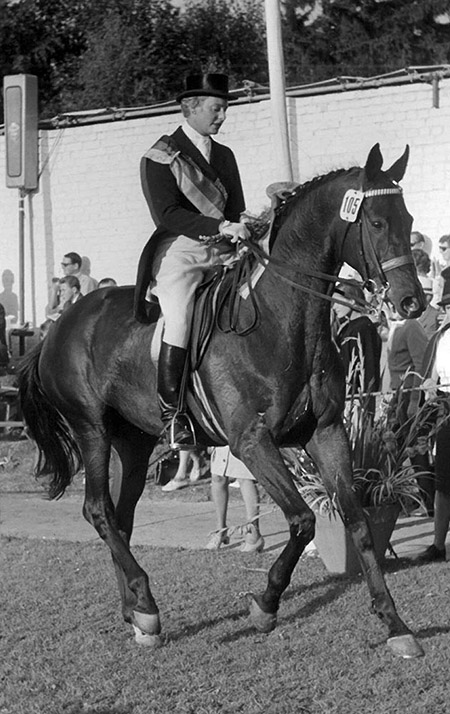
Rosemarie and one of those famous Thoroughbreds, Memor xx
It must have been a marvelous experience, working with the acknowledged master of modem German riding:
“During the time I worked with Schultheis we raised up eleven Grand Prix horses, from nothing, this was really something. No horse had a breakdown, no horse had a bad leg, they were really trained gradually and nicely and never with lost tempers. This is actually the philosophy, we human beings should never forget that we get a horse from a field, or maybe from a racecourse, and we try to begin.”
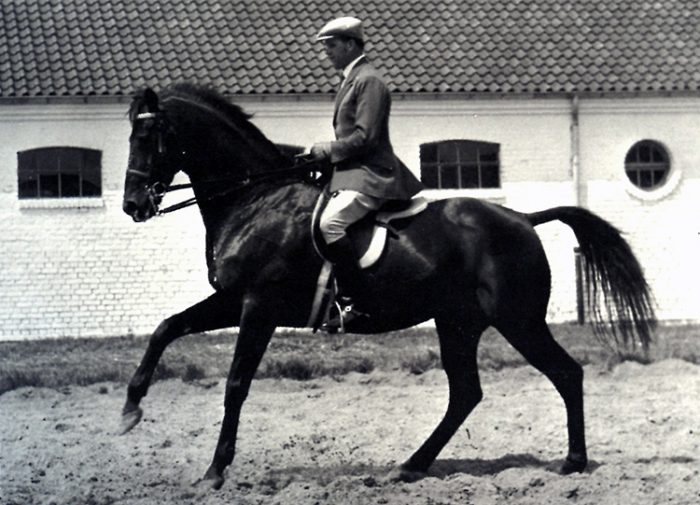
Schultheis and another great Thoroughbred, Chronist
More follows
Available from International Horse Breeders. Here are some of the stallions to choose from: Chacfly PS, Vitalis, Totilas, Sir Donnerhall, and Top Gear. Go to www.ihb.com.au to find out more.
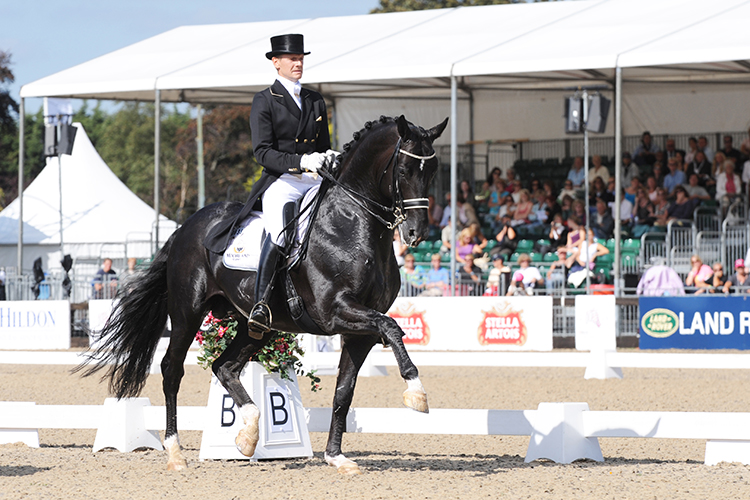
Totilas
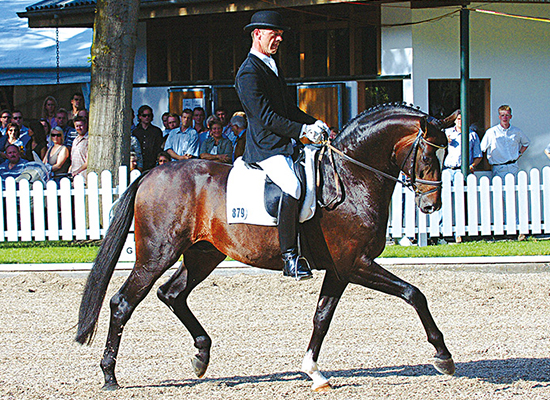
Sir Donnerhall
“We try to bring movement into the horse and train it – which for this horse is not at all natural. As we are asking this from the horse, we must always think about the temperament and conformation of the horse. We should never punish the horse, we should never be so strict and full of strength. We should always try to maintain the lovely conformation and bring confidence into the horse. This is the main thing – if the horse has confidence in you and knows that you are really asking him a lot, but always with gentleness, with niceness – then the horse will never lose his temperament and never lose his confidence in you. Then he will give his best. This is the same with dressage horses as it is with showjumping horses.”
Do you think it is especially difficult with a horse that has raced?
“No – there are some Thoroughbreds who are not provided with lovely gaits. but all those Thoroughbreds that I have seen here in Australia, they are just unbelievable, really great.”
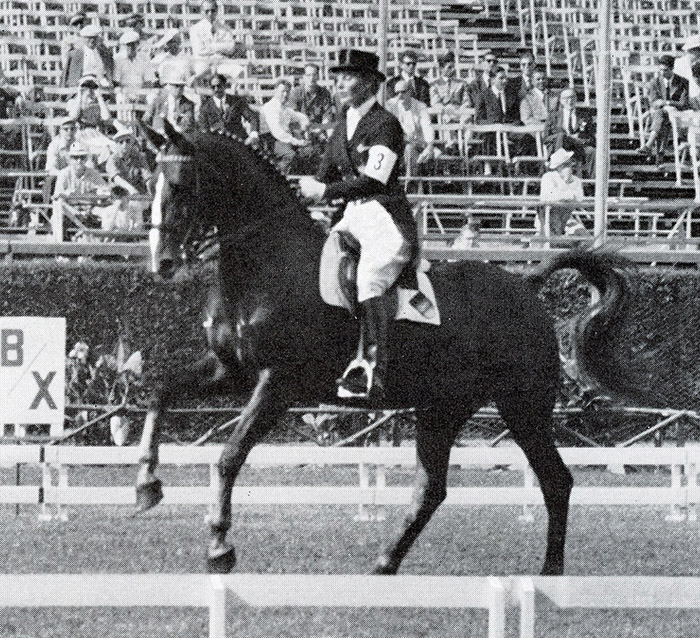
“Changes – You must put calmness into the horse, pretend quietness, not ping, ping. Every stride must be forward with calmness and lightness. Don’t swing your body, and excite the horse, be very collected and calm, but still forward, forward motion stops the swing. Be elegant and sit elegantly in the saddle. Always collect before changes.”
Rosemarie and Doublette at the 1960 Olympic Games
Is dressage on a world scale moving from Dressage as an Art, to Dressage for Competition, and is this a good thing?
“It is a good thing. Dressage has developed tremendously in the whole world. Dressage is the fundamental movements, and training of all horses – cart horses, showjumpers, everything. I read an article only recently by our great showjumping rider, Hans Gunther Winkler, where he said that in order to re-build the German Showjumping team we must take them into schools and show them how you school a horse, and that means that you really put a dressage education into every horse before you move on. This is why Winkler, and Schockemöhle were so successful because they put the dressage into their horses.”
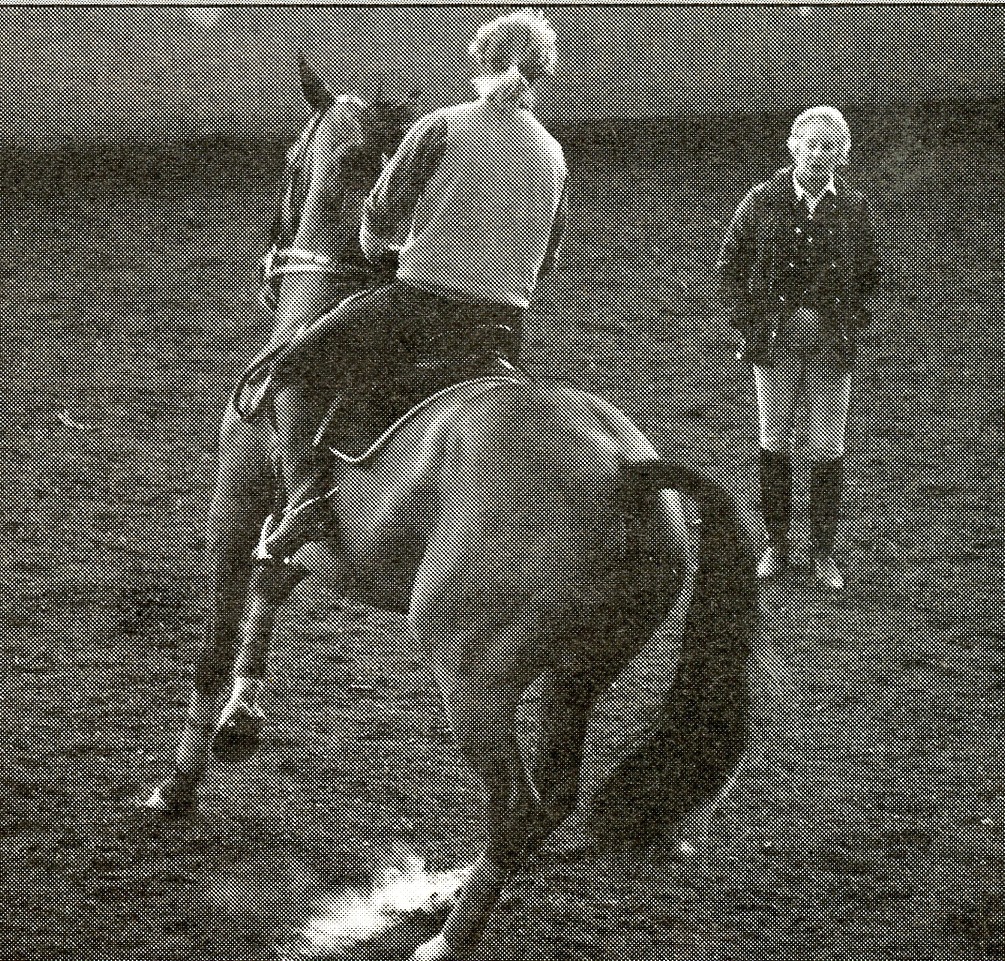
“Pirouettes: Don’t think of a spot and try to pull him around – think of a tiny circle and ride each stride. Don’t let the horse turn himself around. Think of walnuts on the ground – you want the horse to crack them with his feet. Put strength and vigour into the horse. Pump each stride. Put the horse’s head down and give with each stride. Ride as if you want to carry the horse with your legs. After three strides, remember you have to ride more! But the main thing is the first two strides, you have to start off properly.”
Rozzie Ryan riding Stirling Wilton (another Thoroughbred) at the clinic in 1987.
“You have to collect, take, give. See the way I play with the rein. I never pull, I can do it with two fingers. It’s my back which I really put into the saddle. I don’t excite him. I ask him to produce a stride without tilting the neck, then I can give away the rein completely. Go straight out of the pirouette. Push him home, back to the track, when you have finished the movement…”
Rosemarie riding Wilton in 1987
“Even our Three Day Event team, of which I have the honour of being the coach of the Dressage section, I instruct them in dressage and they have really become very successful because they now ride in a different way – and they all say, ‘When I am outside on the cross country course I can do all these things, and the horse responds to my aids’. It is really nice of the boys to say that, because they really hate dressage! But they do it, and they are very keen on learning it.”
What are the basic elements of the dressage philosophy?
“That you get the horse under your command. That the horse is willing – losgelassenheit – the word does not exist in English. That the horse should give, and listen to your aids and respond. This is the main thing in dressage, in the whole of riding.”
“Not all horses can do this. You cannot take a horrible, badly conformed horse out of a cart and expect him to do this. You have to find a horse that has the ability to listen to your aids. A horse with the ability to respond. I am so amazed that Clemens has been able to find this group of horses with lovely conformation, lovely frame and the ability to do everything. There are just a few little things to teach.”
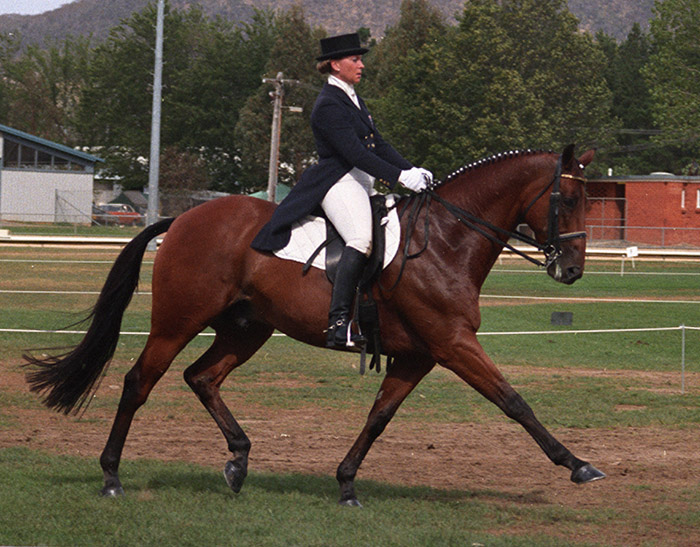
Judy Dierks on one of Clemens’ lovely Thoroughbreds, Galoubet – the pair won an Australian Grand Prix Special Championship, the first held in our country…
“I have had long experience of Grand Prix riding, and now you just have to tune up and give the riders some advice how to do a test. How to get from one movement to another. That is very difficult. You have to produce a very difficult movement, and then re-gain the horse to respond to the new aids. It is difficult because at the same time you have to keep the horse calm and quiet.”
“We have seen that problem in our school here, where the horse gets nervous, then the rider gets nervous too. Then it is upon me to calm them both.”
more follows
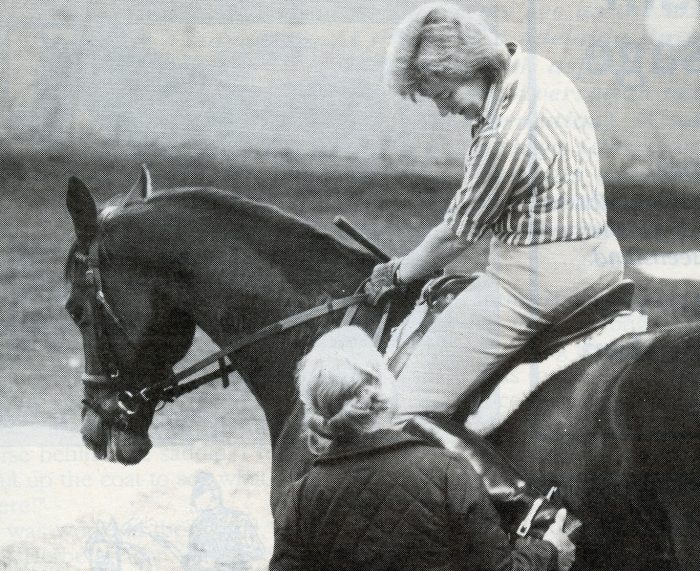
“Riders – Tap with your spur, don’t pierce. Ride, take and give. Ride every stride, take and give so the horse has his ease and he is satisfied in the neck and mouth. Rubber hands, rubber reins, rubber mouth. The result of a high hand is a dropping neck. The result of a lower hand is a carrying neck. If your horse resists, just sit and push into your hands and give. He doesn’t resist any more because you put him there with your back. You have to be quicker with your hands, push with your seat and give. If your horse gets nervous and fiddles around, just push him forward. The cause is the lack of your continuous aids. You must be gentle and nice with invisible aids. Give him comfort in his mouth and secretly ask him to be under. Never annoy the horse, use a nice gentle but energetic aid. Thoroughbreds have to be treated like that. Re-arrange him before a transition. Don’t allow him to be naughty, show him who is captain of the boat…”
How did you develop that skill to assess the rider so quickly?
“Maybe it is a gift. I see it immediately. I see the need of a horse, or the need of a rider, or the need of them both – what you should tell the rider to do, and what you should bring into the horse at that very moment. This is the most important thing.”
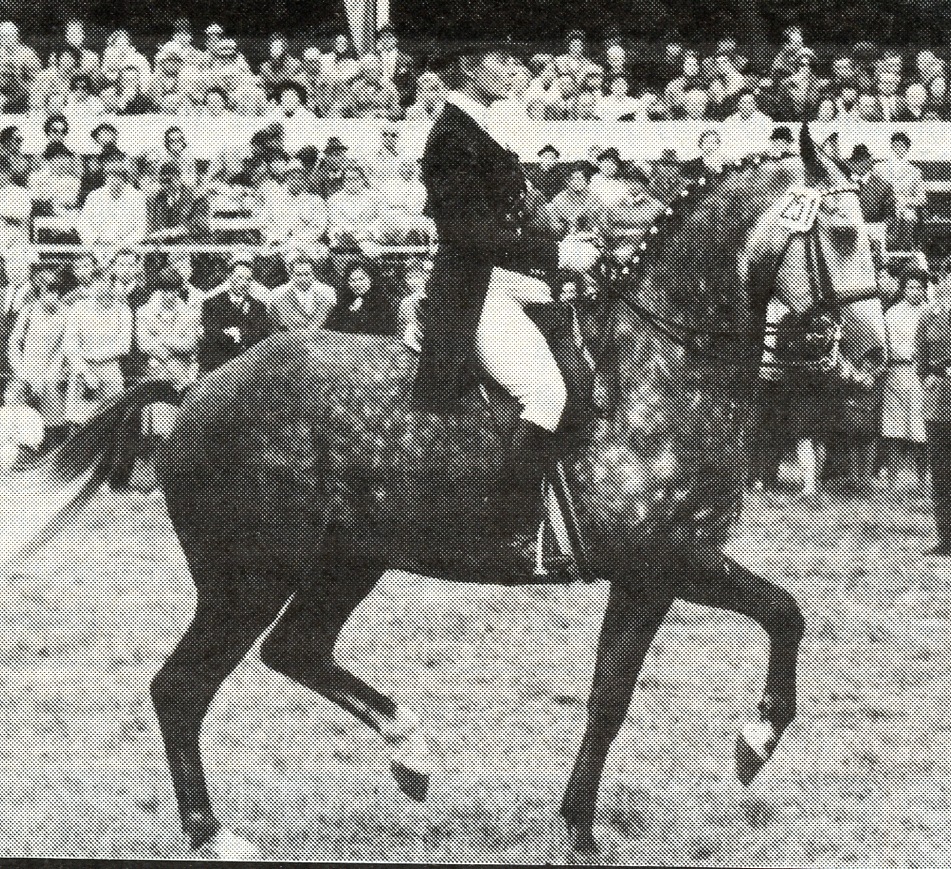
Passage – You have to set the horse on his hindquarters. Never work on the wall, your horse may become accustomed to the wall, and that can create problems. It is all a matter of engagement of the hindlegs. Don’t swing, always maintain the forward pushing motion.
“Perhaps I was born with it, but then it was all formed in me by Schultheis. He was a terribly strict teacher. I was not even allowed to talk in the six hours riding in the morning – not even allowed to talk to him! Not even allowed to ask a question. I just had to do what he said… twenty years long. Therefore I think it is upon me to give that knowledge to other people. If I would sit down at home and do nothing, I could not be happy – I must give that knowledge to other people.”
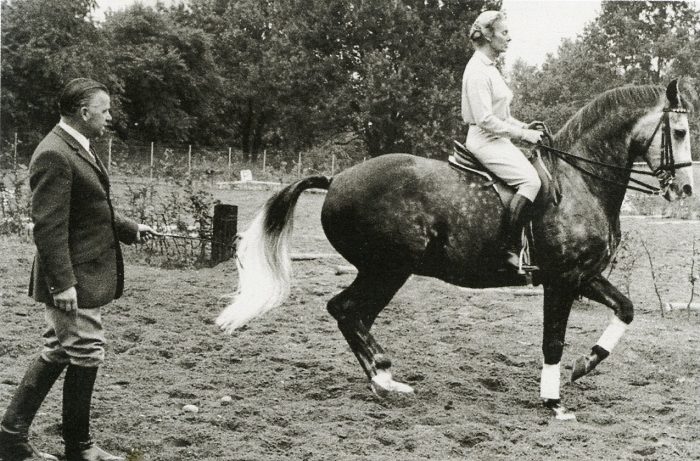
The master, Willi Schultheis, working with Lenard
“You must always think together of horse and rider, always together. Sometimes this can be difficult if you get awful riders who think that what you say is not quite right. They think they can do it in another way. Then you have to try and win them on your way, to ask them to understand you. Because I really have the experience and I want the best for them. You must always find out the mentality of the rider and the mentality of the horse, otherwise you cannot teach them.”
“If you have a little old lady and all she wants to do is have a little pleasure ride, and you start off to teach piaffe and passage, this is wrong. You have to teach the rider how to train his or her horse at that person’s standard. Every day each horse and each rider is different, and the two come together. Sometimes we might sleep badly, or have disruptions at home, and by the time we get to the horse all our strength has gone away. Now you have to calm down, settle down and work your horse.”
“You must never be upset, or annoyed and then bring that annoyance into your horse. It’s the same with all sports – it’s the same with skiing. We should always come to a mood of calm strength before we work with our horse. The horse is living, it’s not a dead thing, it’s not a golf club, it’s not a ski – this is an animal that is full of life, we must treat it properly.”
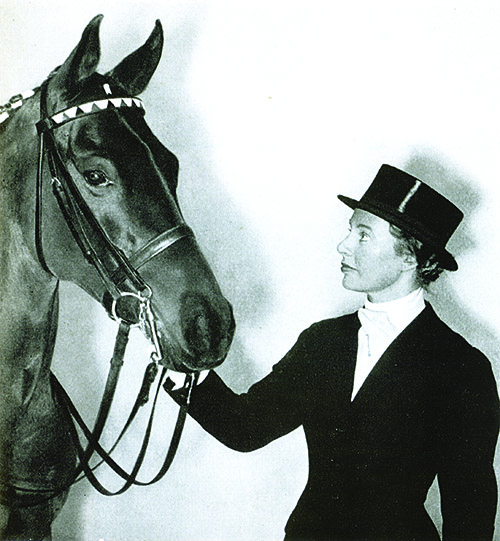
Rosemarie and Thyra
You have had many famous horses…
“I started with a half Thoroughbred mare, Thyra. Then I had three Thoroughbred stallions, Tintorento, Memor and Brilliante, they were all very famous. Then I had the Swedish half blood, Lenard. Lenard was the last great horse I had. I liked them all – they all followed one after another. I liked Lenard – a type of horse like your Thoroughbreds, with a lovely frame and a lovely conformation. He was able to do marvellous piaffe and passage – he won everything.”
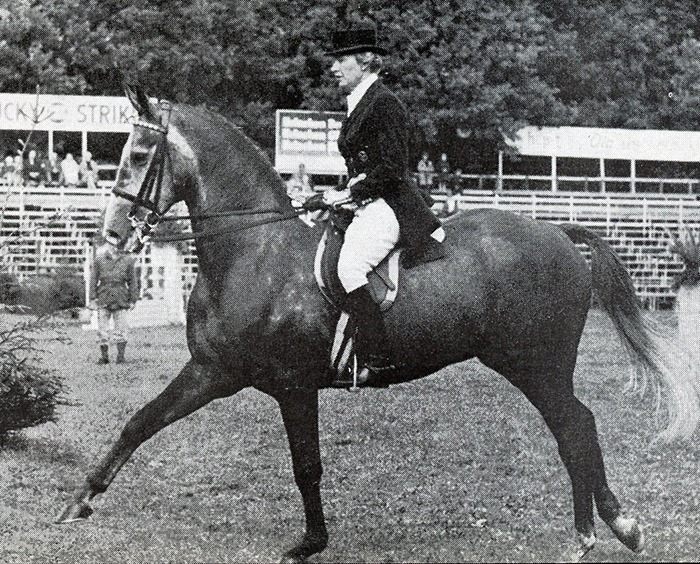
The last great horse Lenard winning the Prix St Georges and Intermediaire
at Rotterdam in 1965…
“Now I teach mainly. Of course, I ride but I do not compete anymore.”
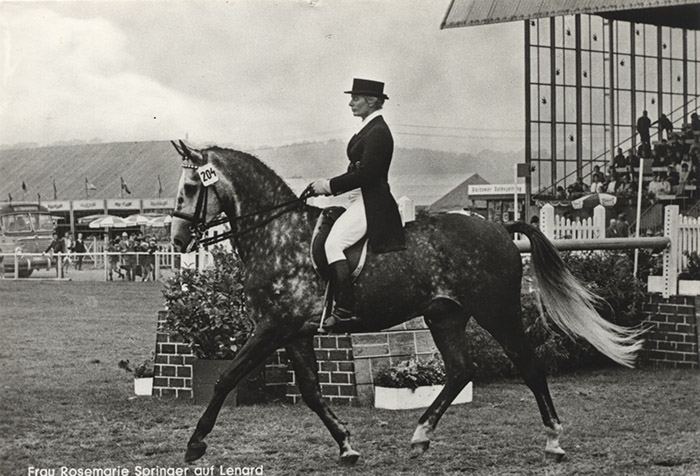
How would you advise an Australian rider who was looking for a top horse?
“The frame must be right, he must not be higher in the hind legs, or stiff in the hind legs. He must have a lovely neck and head, and lovely conformation. He must be gifted to do the extension, and have lovely, lovely movements. You buy a horse like that and then after two years you may still find that it is not up to doing the Grand Prix. This happened several times with us.”
Of the many jewels of knowledge Frau Springer had to offer her pupils, it was often from her vast competitive experience that the Australian riders found they needed to draw most.
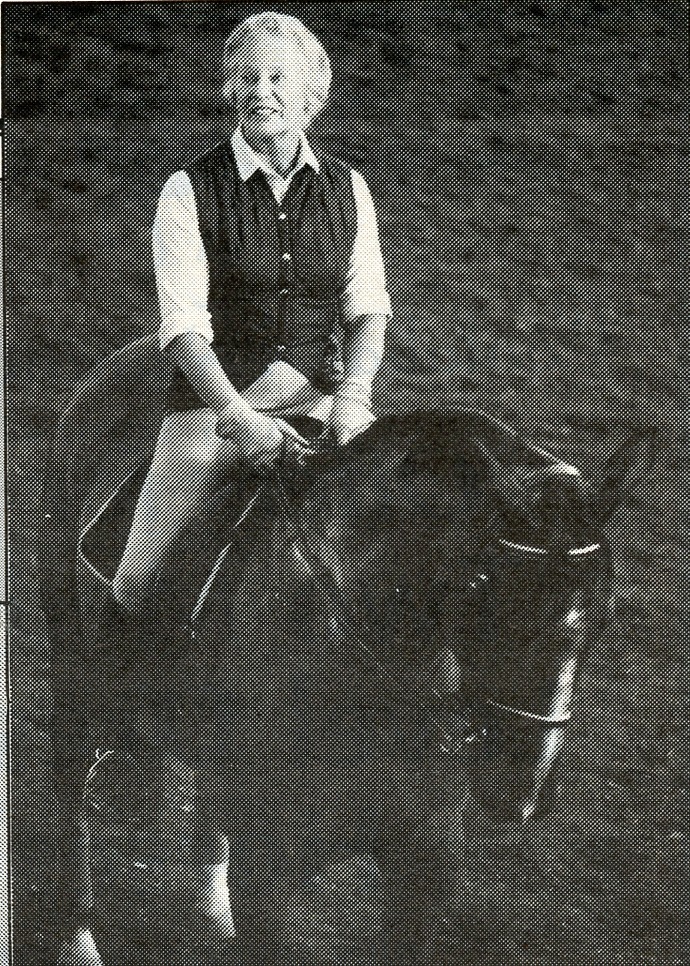
As one rider said “We’re finding out new things about the Grand Prix movements all the time, you come to an instructor like Frau Springer, and you learn little things you hadn’t even thought about – where to keep your weight, how to ride a pirouette, when you should take, when you should give.”
It is no small measure of the development of dressage in Australia that a rider like Rosemarie Springer should find such joy working with our riders, and should find, to her obvious surprise, horses at such a high level of education. We are indeed fortunate that one of the most successful riders of modern times should find time to visit our country and share her knowledge… so freely, and with such warmth and enthusiasm.
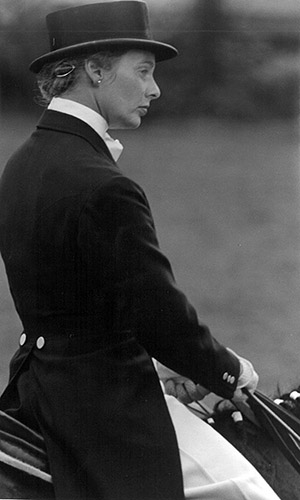
This article originally appeared in the January 1987 edition of The Horse Magazine

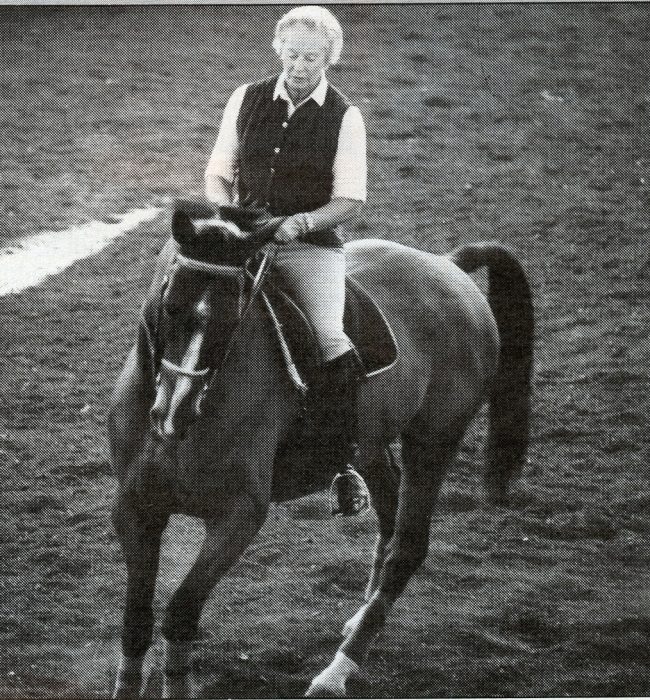
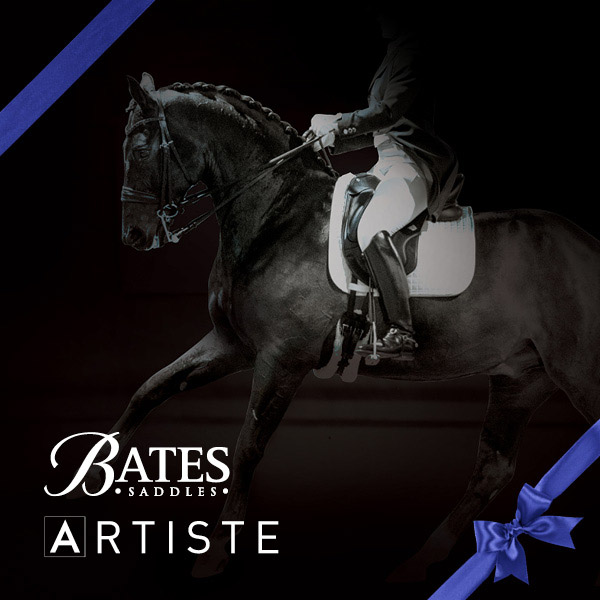
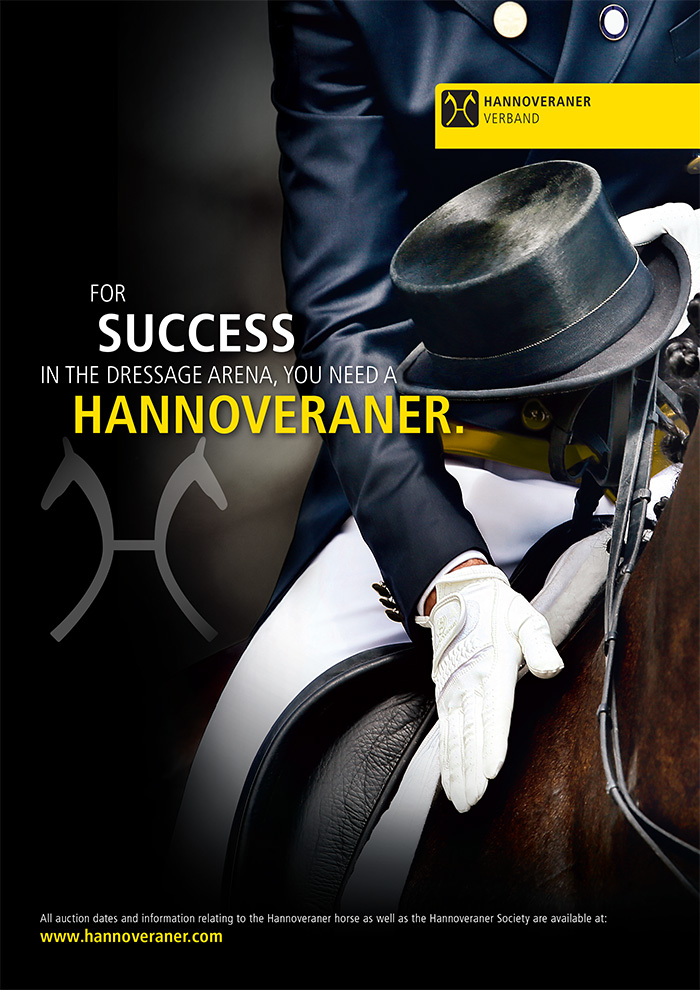
Great articles always look forward to reading them. Still miss your wonderful magazine..